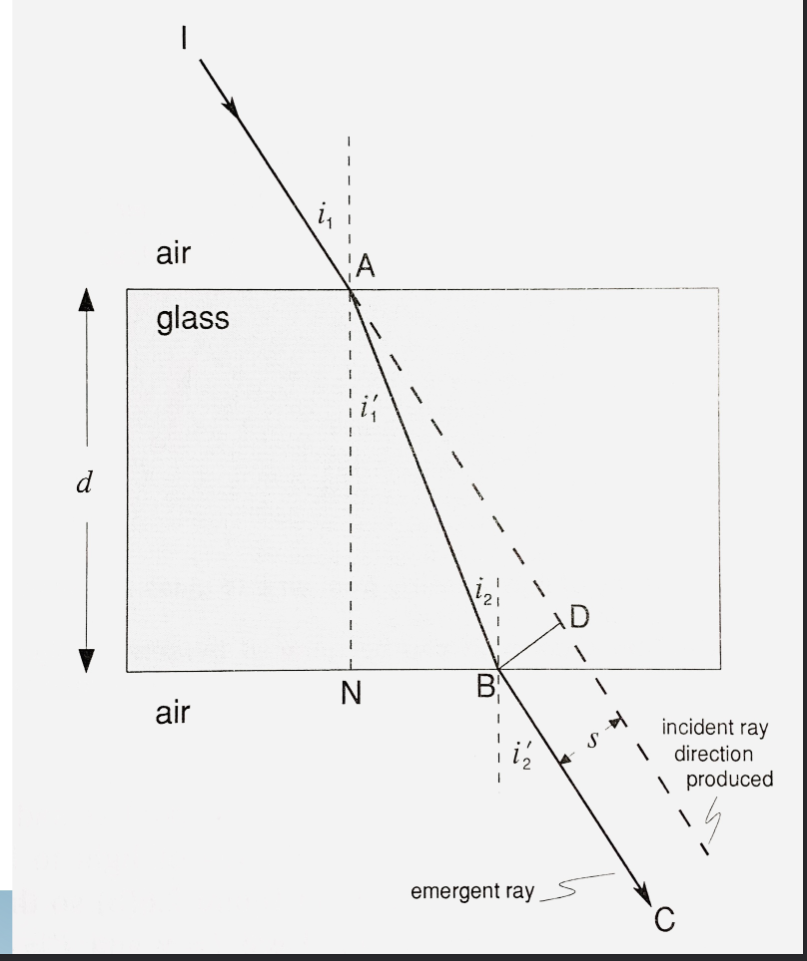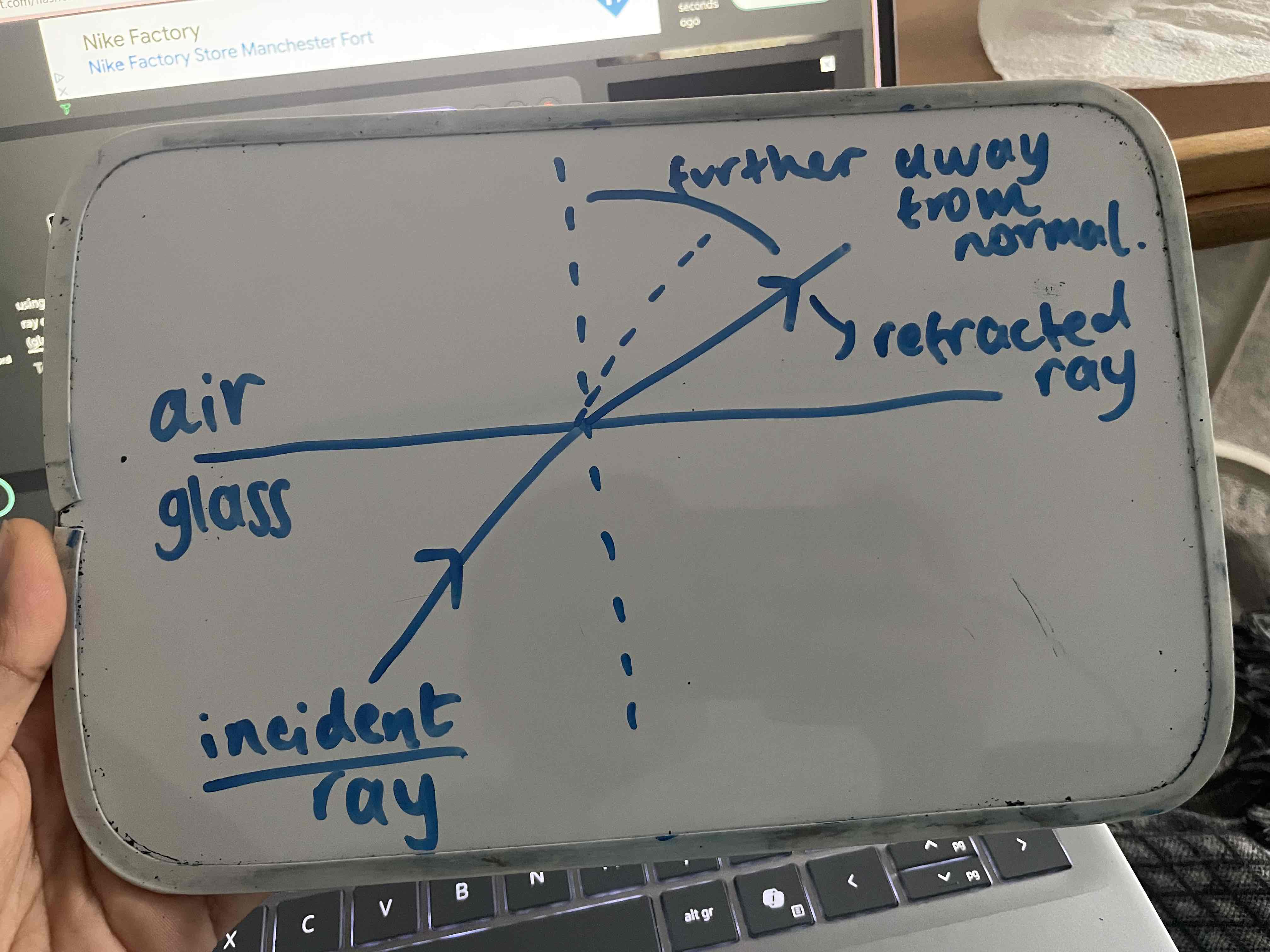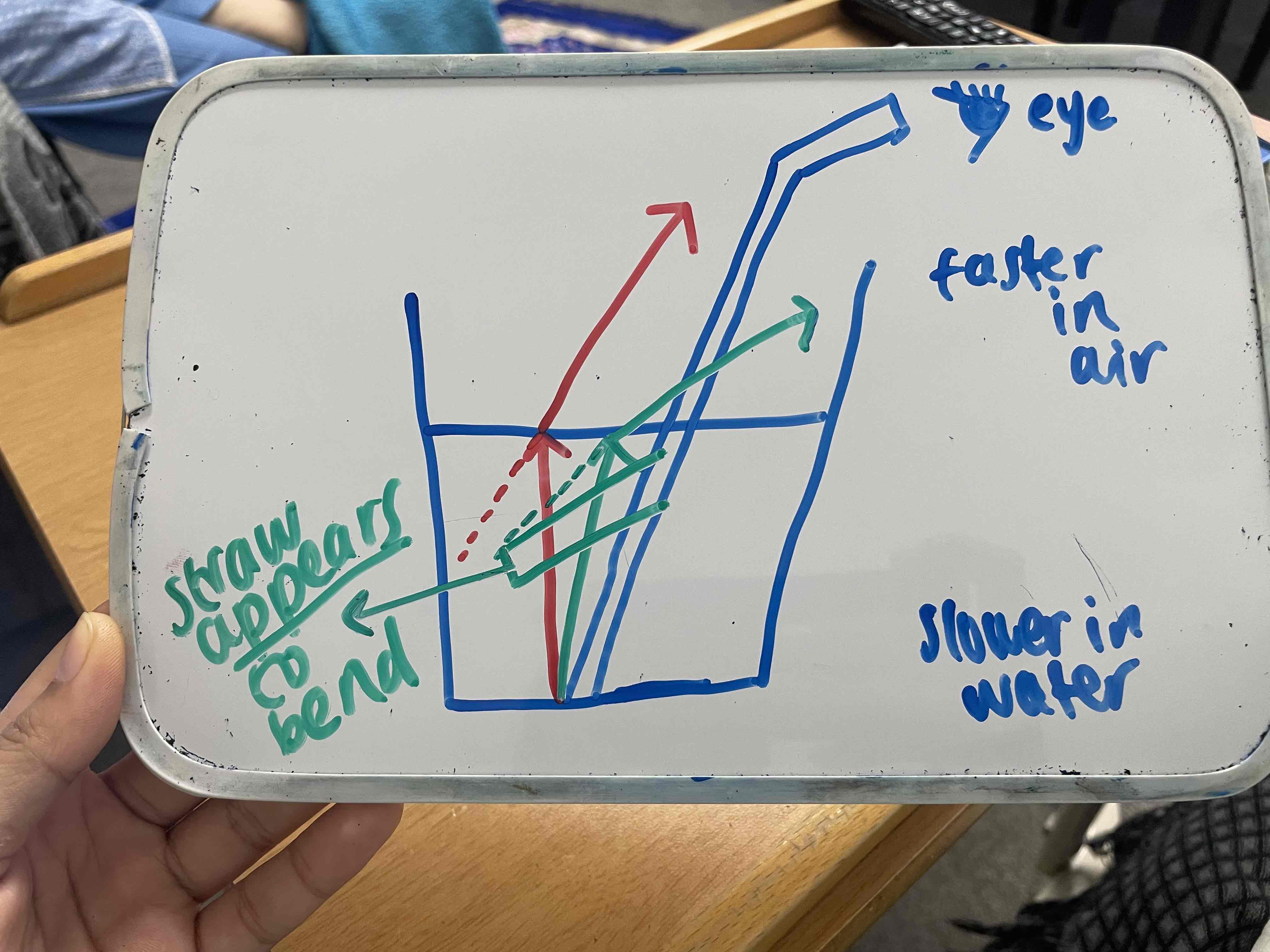Refraction of light
1/20
Earn XP
Description and Tags
objectives: defining refraction, angle of incidence, angle of refraction / snells law / apparent death / refraction at plane surfaces / refraction at curved surfaces
Name | Mastery | Learn | Test | Matching | Spaced |
|---|
No study sessions yet.
21 Terms
refraction definition
when a ray of light is incident on a surface some of it will be reflected, and some absorbed
the direction of the ray inside the surface (glass) is different to that of the incident ray#
this change of direction of the ray at the surface is - refraction
using the diagram explain what happens when an incident ray of light is refracted at the plane boundary between air and glass, and identify the angles
the incident ray hits the surface and travels through the surface - refracts
i = angle of incidence
i’ = angle of refraction

why is the refracted ray bent more towards the normal in the above figure
this is what we expect when light travels from a less dense medium (air) to a more dense medium (glass)
using a diagram explain what happens when a ray of light travels from a more dense medium (glass) to a less dense medium (air)
the refracted ray will be bent more AWAY from the normal

what is snells law
the ratio of sine of the angle of incidence to the sine of the angle of refraction is a constant for any pair of media
sin i / sin i’ = constant
what is the constant referred to as
the refractive index (n)
what is refractive index
refractive index, n = velocity of light in vacuum / velocity of light in medium
alternative way of writing Snells law
n sin i = n’ sin i’
n = refractive index of first medium
i = angle of incidence
n’ = refractive index of second medium
i’ = angle of refraction
what is apparent depth
when the depth of water appears to be less deep (more shallow) than it actually is - this is due to the refraction of light rays at the water surface - when light passes from a denser medium (water) to a less dense medium (air), causing objects to appear at a shallower depth than they actually are
this can make objects appear shallower underwater than they actually are as our eyes perceive the bending of light when it moves from water to air
this is also why a straw partly immersed in water appears bent

refraction by parallel sided media: what happens when light travels through a parallel sided medium (glass)
incident ray of light hits the surface (glass) and is refracted and the light ray that emerges is called the emergent ray
the emergent ray is parallel to the incidence ray but it is displaced sideways by a distance (s) due to refraction
overall effect for my own understanding : the light changes direction slightly when it goes in and out, but it exits in the same direction it was originally traveling, just shifted a bit to the side.
what is the lateral displacement of the ray
referred to as (s)
the sideways of displacement of light
the distance that the emergent ray is displaced sideways by
simple terms: "sideways distance" between where the light would have gone straight and where it actually exits.
equation for lateral displacement (s)
[ d sin (i-i’) ] / cos i’
example of 2 surfaces that are not parallel
prism
common example of a curved refracting surface
spherical surfaces
can either be concave or convex
effect of convex and concave surfaces on the light rays
convex - causes light rays to converge
concave - causes light rays to diverge
to recap what is the equation for vergence
L = 1 / l
what is the equation for reduced vergence
L = n / l
because we take refractive index into account we called it REDUCED vergence
what is the paraxial equation for refraction at spherical surfaces
n’ - n / r = n / l - n’ / l’
n = refractive index of first medium
n’ = refractive index of second medium
r = radius of curvature
l = object distance
l’ = image distance
how can we re write the above equation including F
n’ - n / r = L - L’ = F
F - power of surface
L - object vergence
L’ - image vergence
we use the above formula when we want to know the power of a surface
paraxial equation for refraction at spherical surfaces - to calculate the linear magnification
m = h’ / h = L / L’
m = linear magnification
h = height of object
h’ = height of image
sign conventions : angles
angles are measured as acute angles
angles measured clockwise = negative sign -
angles measured anticlockwise = positive sign +